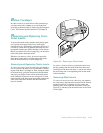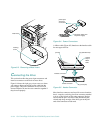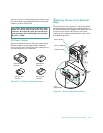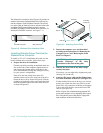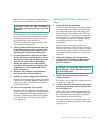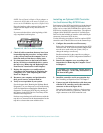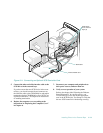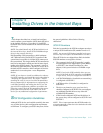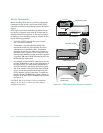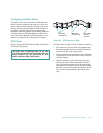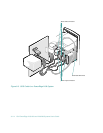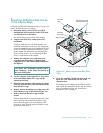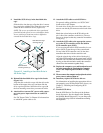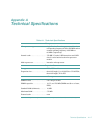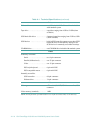
Installing Drives in the Internal Bays 9-111
Chapter 9
Installing Drives in the Internal Bays
This chapter describes how to install and configure
small computer system interface (SCSI) hard-disk drives
in the internal drive bays. Up to three 1.6-inch SCSI
hard-disk drives can be installed in the internal hard-disk
drive bays.
NOTE: You should install only SCSI hard-disk drives in
the internal drive bays; install SCSI CD-ROM and tape
drives in the external drive bays.
Dell PowerEdge 2100 systems have a built-in Adaptec
AIC-7880 ultra wide (fast-20) SCSI-2 controller on the
system board, accessible via a 68-pin SCSI connector on
the system board. This single-channel SCSI controller fea-
tures active termination, which provides for better signal
quality at fast SCSI-2 speeds. You can attach a variety of
SCSI devices (hard-disk drives, tape drives, and so on) to
the built-in SCSI controller, which configures all devices
attached to it as one subsystem—not as independent
devices.
NOTE: If you choose to install an additional or alterna-
tive SCSI controller card, install the card as described in
“Installing an Expansion Card” in Chapter 7. Before
installing the card, be sure to check the documentation
that accompanied it for information on configuring the
card. When installing and cabling the devices, use the
general SCSI configuration guidelines provided in the
following section; check the documentation that accom-
panied your SCSI controller card and/or your SCSI
devices for any additional configuration requirements.
SCSI Configuration Guidelines
Although SCSI devices are installed essentially the same
way as other devices, their configuration requirements
are different. To configure your SCSI subsystem, follow
the general guidelines offered in the following
subsections.
SCSI ID Numbers
Each device attached to the SCSI host adapter must have
a unique SCSI identification (ID) number from 0 to 15.
NOTE: Any narrow SCSI devices installed in the exter-
nal drive bays will require SCSI ID numbers less than 7.
When SCSI devices are shipped from Dell, the default
SCSI ID numbers are assigned as follows:
• The computer’s built-in SCSI controller is config-
ured through the basic input/output system (BIOS)
as SCSI ID 7 (the default ID number for a host
adapter) if the system includes a CD-ROM or tape
drive.
NOTE: If only wide SCSI hard-disk drives are con-
nected to the built-in SCSI controller (no CD-ROM
or tape drives), it may be configured as SCSI ID 15.
• A SCSI CD-ROM drive (installed in an external bay)
is configured as SCSI ID 5.
• A SCSI tape drive (if installed) is configured as
SCSI ID 6.
• The drive you intend to use as your boot device
should be configured as SCSI ID 0. You can configure
any additional hard-disk drives to any of the still-
available SCSI ID numbers.
• If Dell installs additional SCSI hard-disk drives in
the system, they will be configured as SCSI ID 1 and
SCSI ID 2.
NOTE: There is no requirement that SCSI ID numbers be
assigned sequentially or that devices be attached to the cable
in order by ID number.



